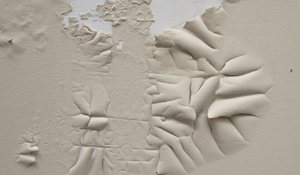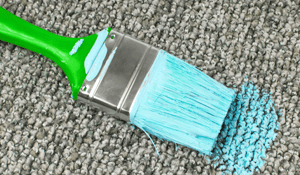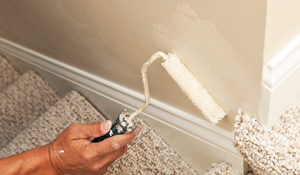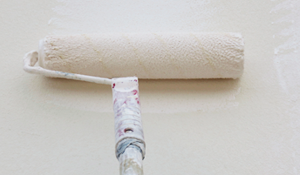Common Painting Mistakes & Fixes
Bubbling & Peeling

Even after the paint has dried, bubbles can appear on the surface that will lead to peeling. Paint bubbles or blisters appear when the top layer of paint separates from the one beneath it. The cause can be heat, moisture, or both.
While you can't always predict when this will happen, you can take steps to minimize the possibility of bubbling paint:
- Properly prepare surfaces
- Paint only on a clean, dry surface
- Use a primer and let it dry completely
- Do not paint in hot or humid conditions
- Let paint dry completely before introducing any moisture
Repair Bubbling Paint
If you already have paint that is blistering or bubbling, you'll want to correct the issue before it starts peeling. Remove paint blisters by scraping and sanding and smooth out the surface as much as possible. Use a primer before repainting and be sure the area is clean and dry before you repaint. If the area is normally moist or humid, consider installing a ventilation system or exhaust fan to keep it from happening again.
Paint on Floor or Carpet

If you have accidently dropped or dripped paint on the floor or carpet, clean it up as soon as possible. Once the stain dries, cleanup becomes more challenging.
On hard or tiled floors, wipe up fresh paint splatters right away with a clean rag. If the paint stain has dried, carefully try scrapping it with a razor blade or putty knife. It should peel off cleanly.
For stains on carpets or rugs, clean paint spills immediately. Soak up any wet paint with a clean rag or sponge. Press into the spill to absorb; avoid scrubbing motion as this will spread the paint and make the stain bigger. Switch to a new, clean cloth or sponge as the paint is lifted. Repeat until the paint stain is removed, then clean with warm soapy water.
For dried paint stains on carpet, you may need to use a paint remover product such as mineral spirits. Before using a chemical remover, read directions thoroughly and test for staining on a small area of the carpet.
Roller Marks

Paint rollers can leave unexpected marks or textures on your painted surface. Roller marks happen frequently if the roller cover is low quality or the nap is longer than necessary.
Tips to prevent roller marks:
- Use a high-quality paint roller
- Apply paint evenly
- Paint in a zigzag to minimize splatter
- Avoid paint build up at ends of the roller
- Use a paint brush for corners; don't force the paint roller into corners
Foam or Paint Craters

Tiny bubbles or foam can develop during the painting process, which will then dry out and pop, leaving craters on your finished surface. "Cratering" happens with older paint or paint that is low-quality.
Simple ways to avoid paint craters:
- Do not excessively roll or brush on paint
- Only use paint that is less than a year old
- Use a good primer
- Be sure you have the right nap length roller
- Do not vigorously shake or stir paint
Cracking

As painted surfaces age, cracks can sometimes appear. The cause of the paint cracks may be low quality paint, too thin of a layer, temperature and humidity, or an undercoat that is not compatible with the top coat. If not repaired, the cracks will grow and the paint will start to flake.
To repair cracked paint:
- Scrape off any loose or flaking paint with a wire brush or scraper
- Sand the area and apply primer
- When primer is completely dry, repaint the surface
